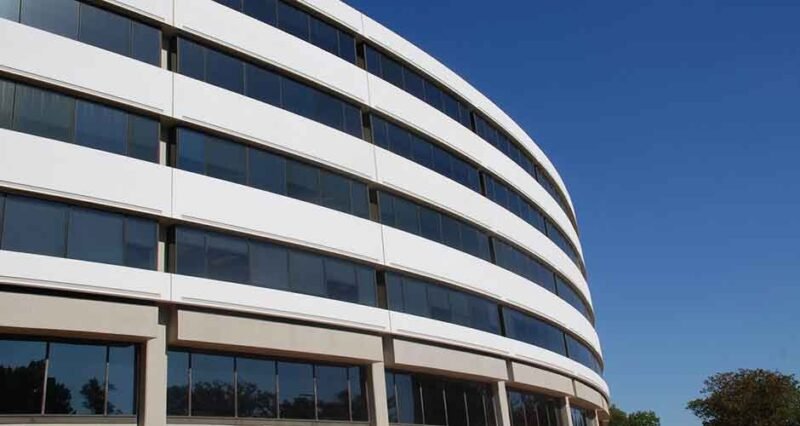
Commercial buildings are more than just towering structures dotting our city skylines. They’re vibrant hubs filled with life, energy, and stories. But what really makes them tick? What ensures they run smoothly, efficiently, and in harmony with our environment? Let’s journey together through the inner workings of these buildings, exploring the ins and outs of energy management, air quality, safety, and so much more.
Effective Energy Management
Energy Efficiency Measures
Implementing energy efficiency measures can significantly reduce energy consumption and costs. Here are some effective measures that building owners and managers can consider:
Lighting
Replacing traditional lighting with LED lighting can reduce energy consumption by up to 75%. Installing occupancy sensors and daylight sensors can also help reduce lighting energy use.
HVAC Systems
Upgrading HVAC systems with energy-efficient models and implementing proper maintenance practices can significantly reduce energy consumption. Installing programmable thermostats and optimizing ventilation can also help improve energy efficiency.
Insulation
Proper insulation of walls, roofs, and floors can reduce heating and cooling energy consumption by up to 30%.
Water Conservation
Implementing water-efficient fixtures such as low-flow faucets and toilets can reduce water consumption and energy required for water heating
Three-Phase Power
A superior electrical solution often seen in commercial settings, three-phase power for commercial buildings provides consistent energy delivery, is cost-effective, and optimizes equipment performance, making it pivotal for efficient large-scale operations.
Renewable Energy Sources
Renewable energy sources can help reduce dependence on fossil fuels and minimize carbon emissions. Here are some renewable energy sources that building owners and managers can consider:
- Solar Energy: Installing solar panels on rooftops or open spaces can generate electricity from the sun, reducing reliance on grid power.
- Wind Energy: Installing wind turbines can generate electricity from wind power, reducing reliance on grid power.
- Geothermal Energy: Using geothermal heat pumps can extract heat from the earth to provide heating and cooling, reducing reliance on electricity or natural gas.
The Importance of Indoor Air Quality
The HVAC System’s Role
Think of the HVAC system like our lungs. Just as we need our lungs to function flawlessly to breathe easily, buildings need their HVAC systems in tip-top shape to ensure clean and fresh air circulates. Regular check-ups and maintenance are a must!
The Invisible Intruders – Indoor Air Pollutants
While we might not see them, tiny pollutants can often float in the air, from dust to chemicals. Being aware of them and taking steps to minimize their presence is the key to ensuring every breath taken inside is a healthy one.
Implementing Safety Measures
Commercial buildings require safety measures to ensure the protection of people, property, and assets. Implementing safety measures in a commercial building can help prevent accidents, injuries, and losses.
Fire Safety Measures
Fire is one of the most common hazards in commercial buildings. Here are some fire safety measures that every commercial building should have:
- Fire alarms: Install fire alarms in the building to detect smoke and fire. Make sure that the alarms are in good working condition.
- Fire extinguishers: Place fire extinguishers in strategic locations around the building. Make sure that they are easily accessible and regularly inspected.
- Fire exits: Ensure that the building has clear and marked fire exits. Make sure that the exits are not blocked and are easily accessible in case of an emergency.
- Sprinkler systems: Install sprinkler systems in the building to suppress fires.
Security Systems
Security systems are essential in commercial buildings to protect people, property, and assets from theft, vandalism, and other criminal activities. Here are some security systems that every commercial building should have:
- Access control systems: Install access control systems to restrict access to the building and certain areas within the building.
- Security systems: Install AI-powered cameras,an alarm system, and advanced safety technology like Protex AI to monitor the building and detect any suspicious activities.
- Security personnel: Hire security personnel to patrol the building and provide additional security. Make sure that the personnel are well-trained and equipped to handle any security situation.
Sustainable Practices
The Essence of Green Building Practices
Our commercial buildings, majestic as they stand, can leave quite the mark on Mother Earth. We can shape that mark to be more of a gentle touch than a heavy footprint. How? By embracing practices that cherish our environment and champion energy efficiency.
Light and Temperature
Kick old bulbs to the curb! With energy-efficient lighting and HVAC systems, buildings can glow and flow without guzzling energy.
Building Materials
Instead of conventional materials, imagine structures built from the likes of recycled steel or the fast-growing bamboo. Not only sturdy but also kind to the planet.
Water Conservation
From toilets that use less water to faucets designed to prevent wastage, every drop counts in the green building world.
Riding the Renewable Wave
Say hello to the future with energy sourced from the sun’s rays and the wind’s might, using technologies like solar panels and wind turbines.
Waste Management
Proper waste management is another essential aspect of sustainable commercial building operations. This involves implementing strategies to reduce, reuse, and recycle waste materials generated by the building’s occupants and operations.
Some effective waste management strategies include:
- Providing recycling bins throughout the building
- Implementing composting programs for organic waste
- Encouraging the use of reusable containers and bags
- Reducing paper usage through digital document management systems
- Donating or repurposing furniture and equipment instead of disposing of them
Crafting the Future of Commercial Buildings
The future of commercial buildings is not just in their design, but in the manner they resonate with our evolving world. As we’ve journeyed through the multifaceted realms of building operations, it’s evident that the synergy of technology, sustainability, and human-centric focus forms the bedrock of their success.
From green practices that echo our responsibility to the environment to advanced technologies that redefine operational efficiency, the narrative is clear: the age of smarter, greener, and more efficient commercial buildings is here.
It’s upon industry leaders, architects, and every stakeholder to usher in this era of excellence, creating spaces that aren’t just structures, but lasting legacies.

